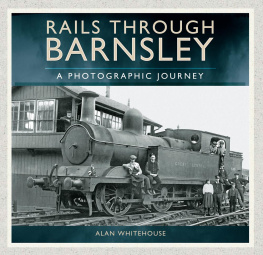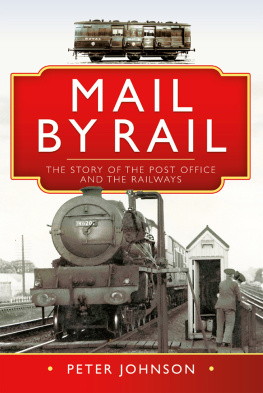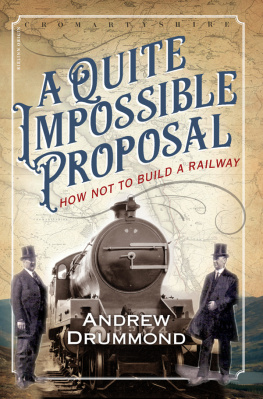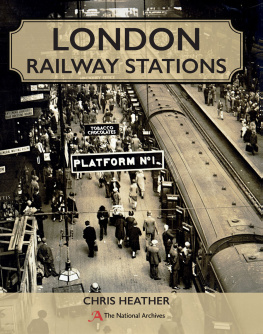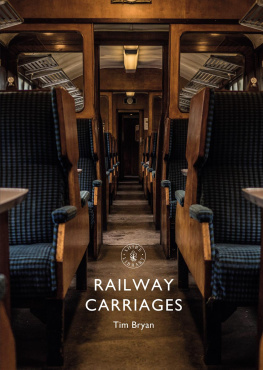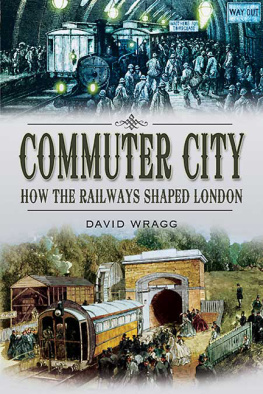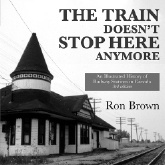


First published in Great Britain in 2016 by
Pen & Sword Transport
An imprint of Pen & Sword Books Ltd
47 Church Street
Barnsley
South Yorkshire
S70 2AS
Copyright Alan Whitehouse, 2017
ISBN 978 1 52670 645 4
The right of Alan Whitehouse to be identified as the author of this work has been asserted by him in accordance with the Copyright, Designs and Patents Act 1988. All rights reserved. No part of this publication may be reproduced or transmitted in any form or by any means, electronic or mechanical, including photocopy, recording or any information storage and retrieval system, without the prior written permission of the publisher, nor by way of trade or otherwise shall it be lent, re-sold, hired out or otherwise circulated without the publishers prior consent in any form of binding or cover other than that in which it is published and without a similar condition including this condition being imposed on the subsequent purchaser.
Typeset in Palatino by Pen & Sword Books Ltd
Printed and bound by Replika Press Pvt. Ltd
Pen & Sword Books Ltd incorporates the imprints of Pen & Sword Archaeology, Atlas, Aviation, Battleground, Discovery, Family History, History, Maritime, Military, Naval, Politics, Railways, Select, Social History, Transport, True Crime, and Claymore Press, Frontline Books, Leo Cooper, Praetorian Press, Remember When, Seaforth Publishing and Wharncliffe.
For a complete list of Pen and Sword titles please contact
Pen and Sword Books Limited
47 Church Street, Barnsley, South Yorkshire, S70 2AS, England
E-mail:
Website: www.pen-and-sword.co.uk
Cover photograph: It is not known whether this was a special occasion, or simply a chance for the local children to have their photograph taken a rare opportunity in those days. Bob Green
Title page photograph: Wharncliffe Woodmoor 25 July 1960. RCTS Archive

A pair of Class 37 locomotives head a train of empty merry-go-round wagons to Dodworth Colliery in the summer of 1983. The picture was taken from Gawber Road bridge looking back towards Barnsley station and the leafy setting makes it hard to believe that this is just half a mile from the town centre. The train will return loaded with coal for the Aire Valley power stations. The last coal train from Dodworth ran in 1987 and today the line is used only by the Huddersfield-Penistone-Barnsley-Sheffield passenger service. Alan Whitehouse
CONTENTS

Staincross Station, looking towards Wakefield Road. Heyday Publishing
INTRODUCTION
BEGINNINGS
M ost people today never handle coal at all. Those who do probably see, or touch it, only occasionally. From being an everyday commodity only a couple of generations ago, coal is now a rarity in most peoples lives. But anyone who has ever lifted a sack of the stuff knows what a heavy and awkward product it is. A significant coal industry could never develop unless a cheap and efficient way could be found of transporting it, in bulk, from the pit to the customer. This simple fact is the key to the rise and fall of Barnsleys railway network.
The first way of moving bulk coal was by water. In the late eighteenth and early nineteenth centuries, three canals penetrated the Barnsley area, running to basins at Cawthorne, Elsecar and Worsborough, as well as Barnsley itself. But they were only a partial answer to the problem of getting coal to where it was needed: the developing mills, factories and furnaces. The hilly countryside around Barnsley made it hard to plot the course of a waterway.
An early drawing of Edmunds Main Colliery in Worsborough Dale. A short wagonway took coal to the Worsborough Branch of the Dearne and Dove Canal.

The statue of Joseph Locke, railway engineer and one of Barnsleys most famous sons. The statue is in Locke Park, Barnsley.


The answer was to cross the land itself, but on rails rather than the rutted, waterlogged and inadequate roads that existed at the time. The idea of putting things on rails was not a new one even then. It is impossible to say what the first railway was or precisely when it was built, because early tramways developed out of very primitive beginnings, using crude wooden rails and wheels, sometime just to cross a few yards of difficult ground. Initially, tramways were used to link collieries with nearby canals. The well-known illustration of Edmunds Main Colliery at Worsborough is a good example.
But gradually, tramways took on a new identity as small transport systems in their own right, and no fewer than three horse-drawn tramways emerged around Barnsley. The Silkstone Tramway, perhaps the best known, ran on 4-foot gauge tracks from Silkstone Common, taking coal down to Cawthorne Basin where it was loaded onto canal barges. The first section opened in 1810 and lasted fifty years before being abandoned as the mines it served were worked out.
Stone block sleepers on the route of the Silkstone Tramway. These early railways used short lengths of cast iron rail supported on the stone blocks. Wooden sleepers and steel rails which could be made in much longer lengths came later.


Just over ten years later, the Worsborough Tramway opened, again linking coal and ironstone mines around Rockley and Pilley with the Dearne and Dove Canal basin at Worsborough Bridge. This was a more ambitious system, several miles in length, which divided at Rockley into two main routes, using a 4 3 gauge. Another first was a short tunnel at Rockley, which can still be seen today. This system had a surprisingly long life, finally being abandoned in about 1920. Over forty years later, when the M1 motorway was driven across the former line of route, a store of wooden wagon wheels and other artefacts were uncovered.

The third route, the Elsecar and Thorncliffe Tramway, left another branch of the Dearne and Dove Canal at Elsecar and ran to Milton, serving an ironworks, at Hoyland and on to Thorncliffe, near Chapeltown, to a second ironworks. A number of coal mines were included in the scheme. This used what was high technology at the time, with stationary steam engines hauling sets of wagons up one of the gradients. It opened in 1830 and part of it was closed fifty years later in 1880. However, another section survived and was rebuilt as a standard gauge railway, which was used as a colliery branch line until just before the First World War.
Next page
